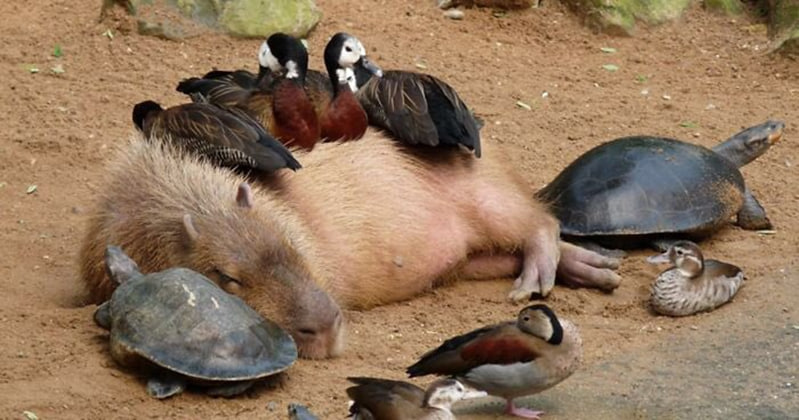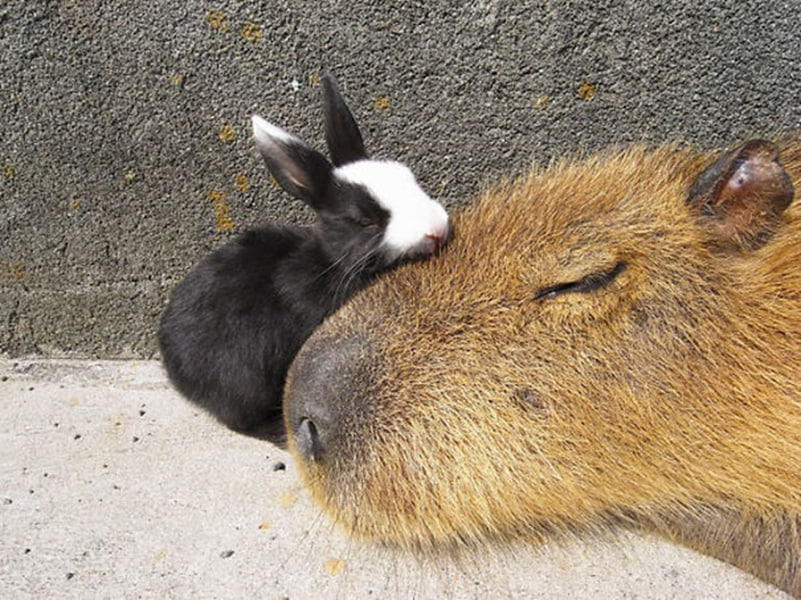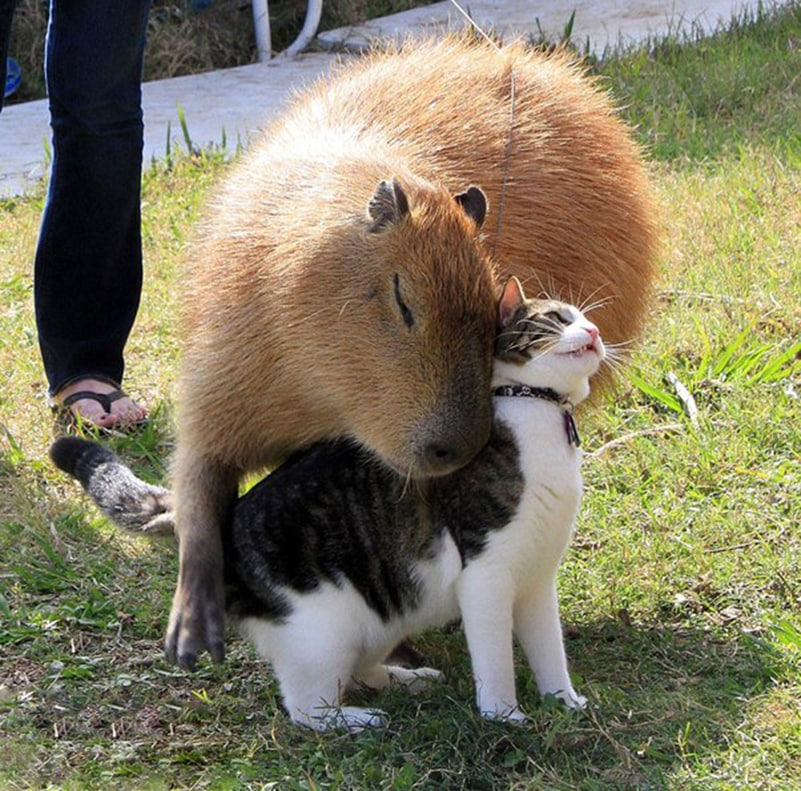by Andy Khong
Capybara (Hydrochoerus hydrochaeris) is a large, semi-aquatic rodent native to South America. They are the largest living rodent in the world, weighing between 77 to 146 pounds (35 to 66 kilograms) and measuring about 3.3 to 4.4 feet (1 to 1.3 meters) in length. Capybaras have a stout and barrel-shaped body with short legs, webbed toes, and a blunt head. They are well adapted for their semi-aquatic lifestyle, with eyes, ears, and nostrils positioned on the top of their head to remain mostly submerged while keeping an eye out for potential predators.
Some key facts about capybaras:
- Social animals: Capybaras are highly social creatures and are often found in groups known as “herds” or “groups.” These groups can consist of 10 to 20 individuals but may grow much larger, sometimes exceeding 100 members. Living in large groups helps protect them from predators and also promotes cooperation and social bonding.
- Herbivores: Capybaras are herbivorous animals, primarily feeding on grasses and aquatic plants. They have a unique digestive system that allows them to ferment plant material in their large cecum, which aids in extracting nutrients from their herbivorous diet.
- Habitat: They inhabit a variety of environments such as savannas, grasslands, marshes, and densely forested areas near water sources like rivers, lakes, and ponds. Capybaras are excellent swimmers and can stay submerged for several minutes, which also helps them evade predators.
- Reproduction: Capybaras have a relatively long gestation period of about 130 to 150 days. The females give birth to litters of around two to eight pups, with an average litter size of four. After birth, the young capybaras are precocial, meaning they are relatively mature and mobile shortly after being born.
- Friendliness: Capybaras have gained a reputation for being friendly and sociable with other species, including humans. They are known to be tolerant of human interaction when in captivity or in areas where they are accustomed to people. This has led to them being nicknamed “the world’s friendliest animal” by some.
While capybaras are generally docile and friendly, it’s essential to remember that they are still wild animals and should be treated with respect and caution. In the wild, they may display defensive behaviours if they feel threatened or cornered.




Capybaras have gained popularity in Japan, in part due to the character “Kapibarasan” (In Japanese, ‘San’ = Mr/Mrs/Miss/Ms), which is a cute and endearing capybara cartoon character. Kapibarasan was created by the Japanese company TRYWORKS and first introduced as a merchandise character in 2005.
The character Kapibarasan is depicted as a plump and cheerful capybara, often wearing a straw hat and enjoying various activities in a relaxing and laid-back manner. The design of Kapibarasan and its cute and gentle demeanour resonated with many people, especially among fans of “kawaii” (cute) culture in Japan. As a result, the character quickly gained popularity and became a symbol of relaxation and leisure.
Kapibarasan merchandise, including plush toys, stationery, accessories, and other products, became widely available in Japan. It wasn’t just limited to Japan, though, as the character’s popularity spread internationally as well. Kapibarasan’s charm has attracted fans from different parts of the world, making it a global phenomenon.
Due to the popularity of Kapibarasan, capybaras in general also received attention and affection from the public in Japan. Some zoos and animal cafes in Japan feature capybaras as popular attractions, allowing visitors to interact and even feed these friendly rodents. Additionally, videos and images of capybaras interacting with other animals, such as cats, have become viral sensations on social media, further adding to their popularity.

Overall, the presence of Kapibarasan in Japanese pop culture has undoubtedly contributed to the increased popularity and positive perception of capybaras in Japan and beyond.

In many places, capybaras are protected and considered a species of least concern by the International Union for Conservation of Nature (IUCN) due to their stable population and widespread distribution in South America. However, localized threats such as habitat destruction and hunting for their meat and fur still exist in some areas.
From the World’s Friendliest Animal (Capybara) to the World’s Happiest Animal (Quokka) from Rottnest Island (Western Australia): https://www.youngpioneertours.com/rottnest-island-worlds-happiest-animal-found/
DOGters (Doggie Medicine for humans): https://www.youngpioneertours.com/doggie-medicine-for-humans/





